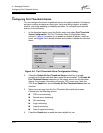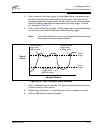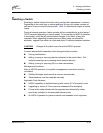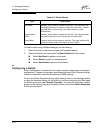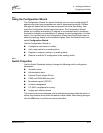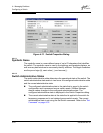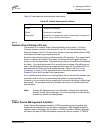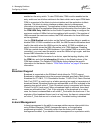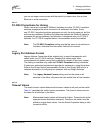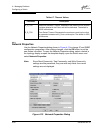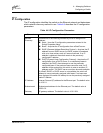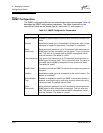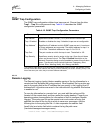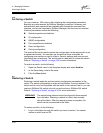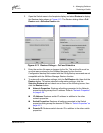
4 – Managing Switches
Configuring a Switch
4-24 59048-04 Rev. B
D
enabled on the entry switch. To view FDMI data, FDMI must be enabled on the
entry switch and on all other switches in the fabric which are to report FDMI data.
FDMI is comprised of the fabric-to-device interface and the application-to-fabric
interface. The fabric-to-device interface enables a device’s management
information to be registered. The application-to-fabric interface provides the
framework by which an application obtains device information from the fabric. Use
the FDMI HBA Entry Limit field on the Switch Properties dialog to configure the
maximum number of HBAs that can be registered with a switch. If the number of
HBAs exceeds the maximum number, the FDMI information for those HBAs can
not be registered.
Use the FDMI Enabled radio button on the Switch Properties dialog to enable or
disable FDMI. If FDMI is enabled on an HBA, the HBA forwards information about
itself to the switch when the HBA logs into the switch. If FDMI is enabled on a
switch, the switch stores the HBA information in its FDMI database. Disabling
FDMI on a switch clears the FDMI database. If you disable FDMI on a switch, then
re-enable it, you must reset the ports to cause the HBAs to log in again, and thus
forward HBA information to the switch.
To view detailed FDMI information for a device, open the topology display, click
the FDMI tab, and click the Information (i) button in the Details column of the
FDMI data window. The Detailed FDMI Display dialog displays the specific
information for that device. Refer to ”FDMI Data Window” on page 4-9 for more
information.
4.9.2.5
Broadcast Support
Broadcast is supported on the SANbox2 which allows for TCP/IP support.
Broadcast is implemented using the proposed standard specified in Multi-Switch
Broadcast for FC-SW-3, T11 Presentation Number T11/02-031v0. Fabric Shortest
Path First (FSPF) is used to set up a fabric spanning tree used in transmission of
broadcast frames. Broadcast frames are retransmitted on all ISLs indicated in the
spanning tree and all online F_Ports. Broadcast zoning is supported with Access
Control List (ACL) hard zones. When a broadcast frame is received, these hard
zones are enforced at the F_Port. If the originator of the broadcast is in a hard
zone, the frame is retransmitted on all online F_Ports within the hard zone. If the
originator of the broadcast frame is not in a hard zone, the frame is retransmitted
on online F_Ports that are not in a hard zone. The default setting is disabled.
4.9.2.6
In-band Management
In-band management is the ability to manage switches across inter-switch links
using SANbox Manager, SNMP, management server, or the application
programming interface. The switch comes from the factory with in-band
management enabled. If you disable in-band management on a particular switch,



